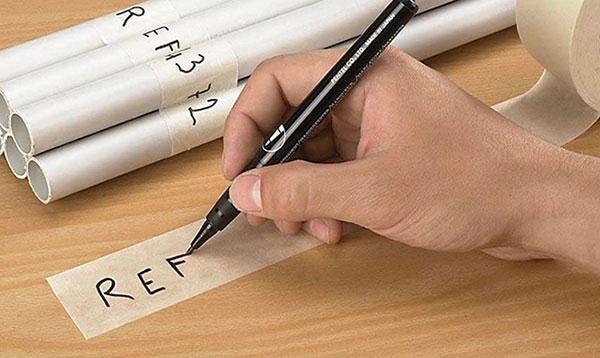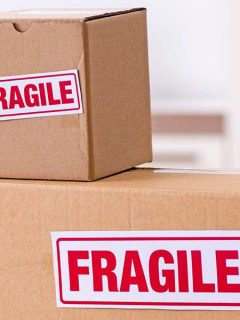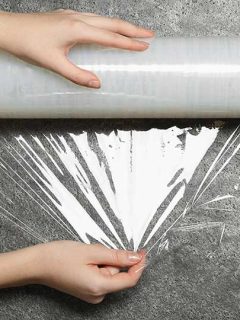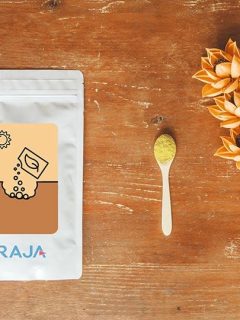Masking tape is used for a variety of purposes, obvious to some, less so to others.Its best known and most obvious use is among painters, to mask off corners and those areas that don’t need to be painted.But you can also use it to temporarily secure lightweight products or to seal packages.It allows you to, finally, write information on it as well.Let’s take a closer look at these applications, and together we’ll see what tips you can use to make the best use of your masking tape.
Four applications of masking tape
► 1. Masking
[We’ll start with its most logical application. As the name suggests, masking tape is used for masking. As a result, this tape is very popular with painters. They use it to
- separating two parts of a wall to be painted ;
- create a separation between the wall and the floor/ceiling ;
- painting quickly without fear of sticking out.
masking tape is made of thin crepe paper,
which
makes it easy to tear by hand.This tape has a limited adhesion, which allows you to remove it easily – wherever and whenever you want.Moreover, it leaves no marks on its backing and therefore no risk of damage.It not only has good adhesion on walls, but also on metal, glass, rubber, wood, etc.Masking tape is waterproof and temperature resistant up to +60 °C.There are also variants, useful in the printing industry, that are temporarily resistant to temperatures up to +80 °C.

1.1 How should I use masking tape BEFORE painting?
-
First of all, make sure that the surface to be painted and masked is even. If you place it on an uneven surface, you risk getting paint underneath your tape. This is something to be avoided, of course.
-
Clean the surface before you start painting. Masking tape sticks better on a surface that is not wet, greasy or dusty, and you will avoid getting stains on your wall after painting.
-
Test the adhesion on an inconspicuous area.
-
Do not pull the tape when applying it, as this may distort it and it may not stick perfectly everywhere.
-
Use thin masking tape (between 1.9 and 3.8 cm) if you are masking small areas (e.g. switches). With a wider tape (between 5 and 7 cm) you can more easily cover gaps on a wall or the separation between the wall and the ceiling/floor.
-
Avoid having small pieces of tape next to each other, and prefer long pieces, to make sure it is as straight as possible.
-
Masking tape has relatively little adhesion, so it is important to press the tape down before you start painting.
-
Masking corners and covering the edges of the surfaces to be painted is obviously one thing, but it is also important to cover larger surfaces in the vicinity, such as sofas and furniture. You certainly don’t want paint stains to appear on them, so cover your furniture with covers or caps and protect your floor with e.g. cardboard spacers.
1.2 How do I use masking tape AFTER painting?
-
Remove the tape as soon as you have applied the last coat of paint. Otherwise, the paint will penetrate the crepe paper and create irregularities on your painted surface, where you wanted to have a straight line. Moreover, if you remove the tape immediately, you avoid discolouring your wall.
-
Remove the tape slowly and without stopping, preferably at a 45° angle.

► 2. Fix
Masking tape is also useful for assembling lightweight items. It’s especially handy if you’re moving house, so you can gather things together, such as table legs, neon lights, cutlery, or even your assortment of pens or pencils. Nothing will be left lying around! And afterwards, simply remove the tape, without damaging the backing.
► 3. Close
Aswith PP and PVC tape, you can use masking tape to close packages. It’s important to note that this tape is much cheaper and easier to remove. However, it is not UV resistant, and when exposed to light, its adhesion will gradually decrease. Still, it’s very practical for temporary closures.
► 4. Mark
Comme déjà mentionné ci-dessus, le ruban adhésif de masquage est fait de papier crêpe. Il se déchire donc facilement à la main, mais il possède également un second avantage non négligeable : c’est un ruban qui permet l’écriture. C’est utile si vous voulez ajouter une localisation ou identification temporaire dans votre entrepôt ou bureau (lors d’un déménagement par exemple). Vous collez le ruban adhésif où vous voulez, vous y inscrivez un nom ou numéro de suivi, et retrouvez facilement toutes vos marchandises !















